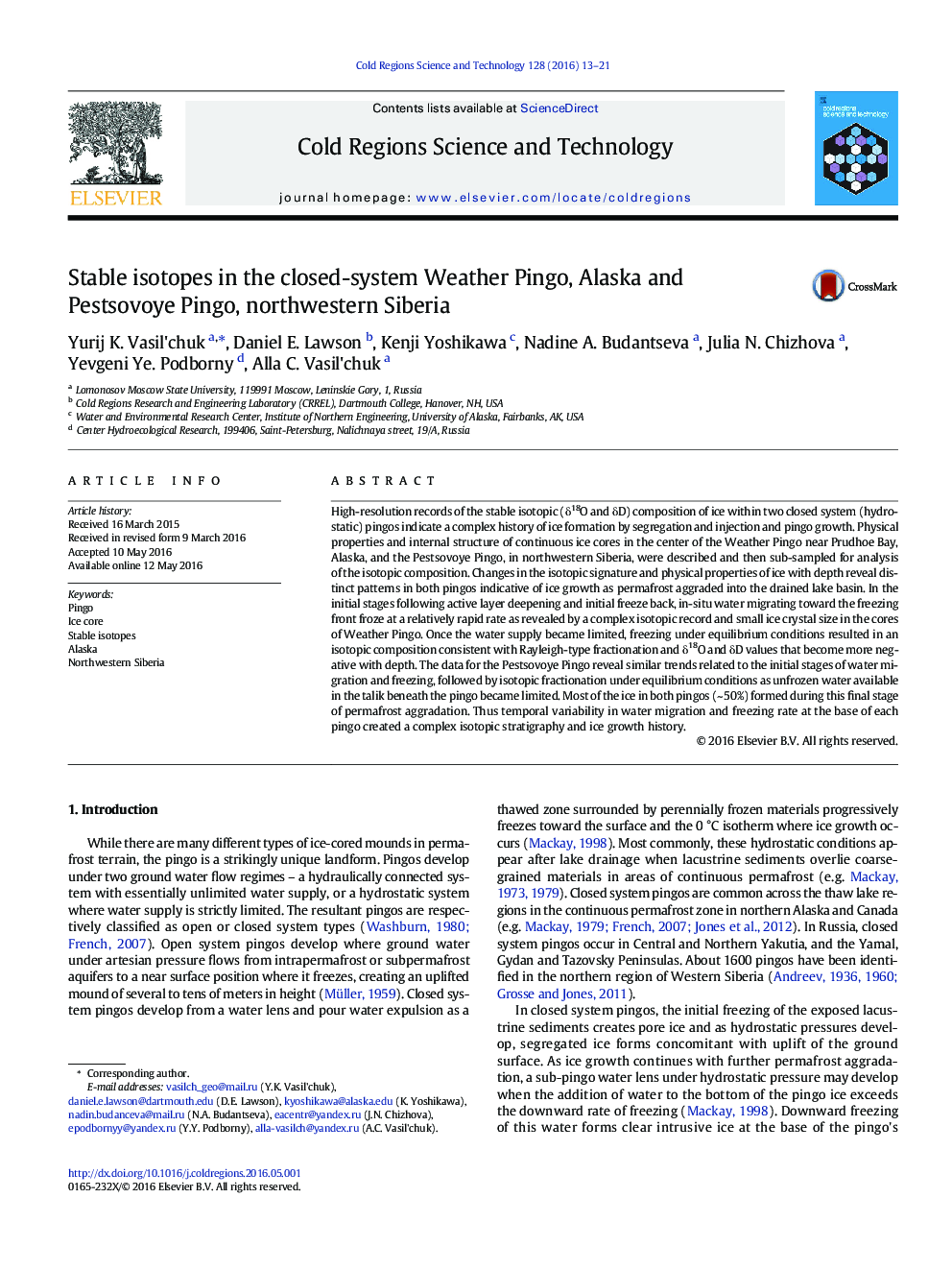| کد مقاله | کد نشریه | سال انتشار | مقاله انگلیسی | نسخه تمام متن |
|---|---|---|---|---|
| 4675659 | 1634436 | 2016 | 9 صفحه PDF | دانلود رایگان |

• We examine δ18O and δD records within two typical closed-system pingos
• Comparison of co-isotope trends for Weather and Pestsovoye Pingos show isotopic similarity
• Isotope values suggest that most of the ice grew under equilibrium freezing conditions
• Both pingos formed after permafrost had aggraded into the drained lake basin sediments
High-resolution records of the stable isotopic (δ18O and δD) composition of ice within two closed system (hydrostatic) pingos indicate a complex history of ice formation by segregation and injection and pingo growth. Physical properties and internal structure of continuous ice cores in the center of the Weather Pingo near Prudhoe Bay, Alaska, and the Pestsovoye Pingo, in northwestern Siberia, were described and then sub-sampled for analysis of the isotopic composition. Changes in the isotopic signature and physical properties of ice with depth reveal distinct patterns in both pingos indicative of ice growth as permafrost aggraded into the drained lake basin. In the initial stages following active layer deepening and initial freeze back, in-situ water migrating toward the freezing front froze at a relatively rapid rate as revealed by a complex isotopic record and small ice crystal size in the cores of Weather Pingo. Once the water supply became limited, freezing under equilibrium conditions resulted in an isotopic composition consistent with Rayleigh-type fractionation and δ18O and δD values that become more negative with depth. The data for the Pestsovoye Pingo reveal similar trends related to the initial stages of water migration and freezing, followed by isotopic fractionation under equilibrium conditions as unfrozen water available in the talik beneath the pingo became limited. Most of the ice in both pingos (~ 50%) formed during this final stage of permafrost aggradation. Thus temporal variability in water migration and freezing rate at the base of each pingo created a complex isotopic stratigraphy and ice growth history.
Journal: Cold Regions Science and Technology - Volume 128, August 2016, Pages 13–21